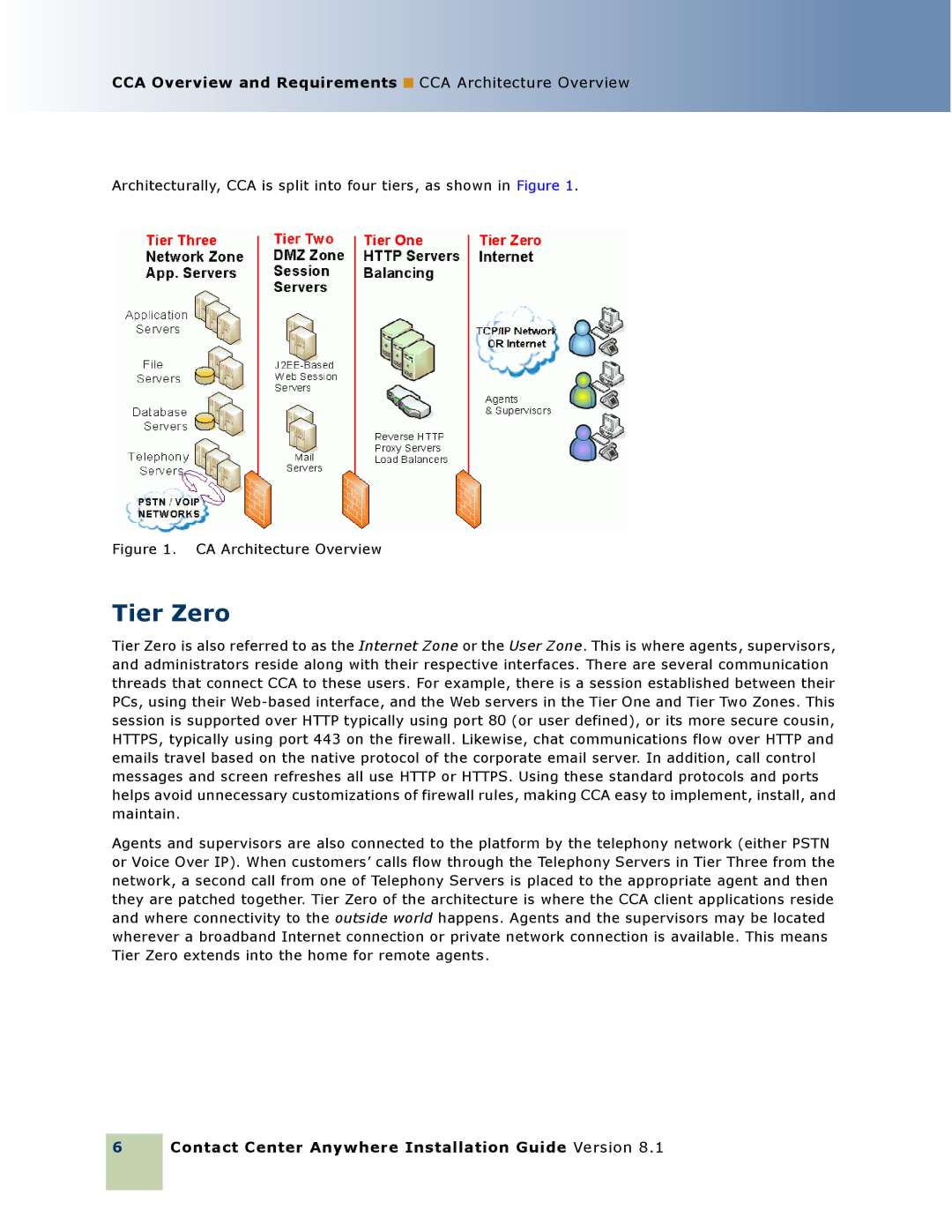
CCA Overview and Requirements ■ CCA Architecture Overview
Architecturally, CCA is split into four tiers, as shown in Figure 1.
Figure 1. CA Architecture Overview
Tier Zero
Tier Zero is also referred to as the Internet Zone or the User Zone. This is where agents, supervisors, and administrators reside along with their respective interfaces. There are several communication threads that connect CCA to these users. For example, there is a session established between their PCs, using their
Agents and supervisors are also connected to the platform by the telephony network (either PSTN or Voice Over IP). When customers’ calls flow through the Telephony Servers in Tier Three from the network, a second call from one of Telephony Servers is placed to the appropriate agent and then they are patched together. Tier Zero of the architecture is where the CCA client applications reside and where connectivity to the outside world happens. Agents and the supervisors may be located wherever a broadband Internet connection or private network connection is available. This means Tier Zero extends into the home for remote agents.
6
Contact Center Anywhere Installation Guide Version 8.1
